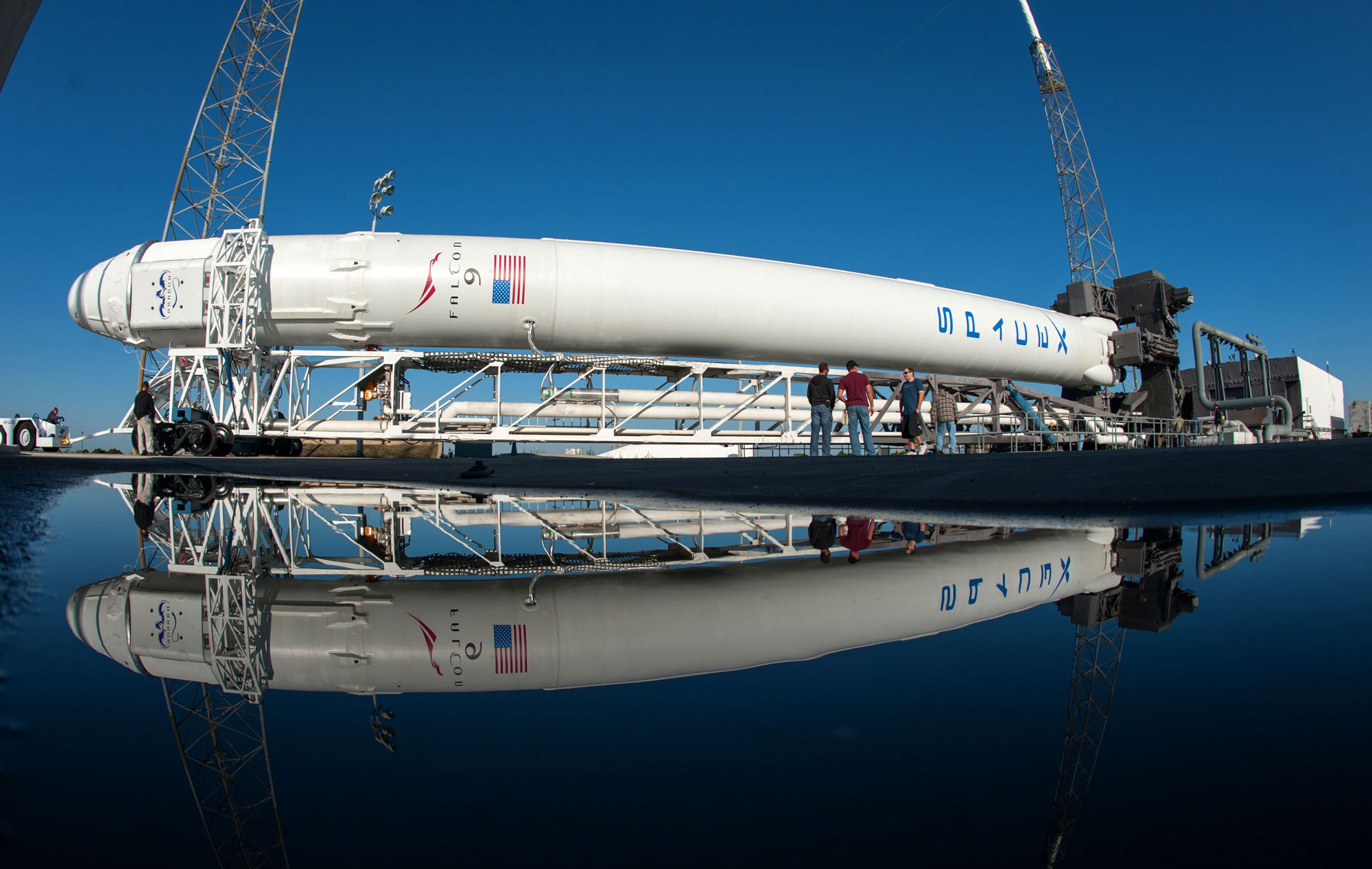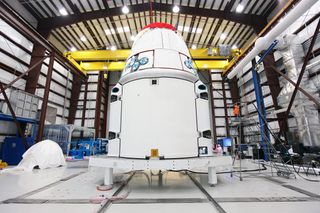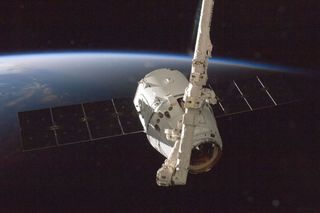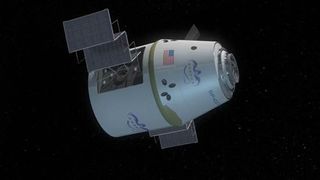SpaceX Launching Private Dragon Capsule to Space Station Today

CAPE CANAVERAL, Fla. — The private spaceflight company SpaceX is counting down to launch an unmanned Dragon space capsule today (March 1) to deliver vital supplies for astronauts
A SpaceX Falcon 9 rocket will launch the Dragon capsule toward the space station from the Cape Canaveral Air Force Station here in Florida. Liftoff is set for 10:10 a.m. ET (1510 GMT).
You can watch SpaceX launch its Dragon capsule in this webcast on SPACE.com, courtesy of NASA, beginning at 8:30 a.m. EST (1330 GMT).
SpaceX officials said they are eager to see the Dragon space capsule make its second cargo run to the International Space Station.

"We're a launch company," SpaceX president Gwynne Shotwell told reporters Thursday (Feb. 28). "We love to launch."
SpaceX has a $1.6 billion contract with NASA to provide at least12 unmanned cargo missions to the space station as part of the agency's Commercial Resupply Services program. The company launched the first mission under that contract, as well as a separate demonstration flight, to the station in 2012. [6 Fun Facts About SpaceX]
The Hawthorne, Calif.-based SpaceX (the name is short for Space Exploration Technologies) was founded in 2002 billionaire entrepreneur Elon Musk to develop new commercial rockets and spacecraft. The Falcon 9 rockets are named after the fictional Millennium Falcon spaceship from "Star Wars," while the Dragon capsules are named for "Puff the Magic Dragon," Musk has said.
Get the Space.com Newsletter
Breaking space news, the latest updates on rocket launches, skywatching events and more!
For today's launch, the Dragon spacecraft has been packed with about 1,200 pounds of supplies for the International Space Station's six-man crew. It is due to arrive at the space station early Saturday (March 2) and be captured by astronauts using the outpost's robotic arm and parked at an open docking port.
Included among the Dragon capsule's cargo are new science experiments for the space station's crew, as well as the music single "Up in the Air" by the American rock band Thirty Minutes to Mars for NASA astronaut Thomas Marshburn, a flight engineer on the station. SpaceX also packed some tasty treats for the station crew picked from the orchard of a SpaceX employee's father, Shotwell said.
Rocket engines check out
Shotwell said SpaceX has taken every precaution to assure that today's launch will not experience a repeat of the engine problem that shut down one of the nine Merlin rocket engines on a Falcon 9 that launched the firm's first Dragon cargo mission last October. A "material flaw" in the engine's jacket went undetected before launch caused the anomaly, she added.
"We did extensive analysis, obviously, to understand the problem," Shotwell said. "Extensive testing on these particular engines."
NASA officials are also confident in SpaceX's ability to fly safely and efficiently to the station.
"We felt the risks we were accepting with this flight were the same as we'd accepted with the other flight," said Mike Suffredini, the manager of the International Space Station program office at Johnson Space Center in Houston.
Sequester and beyond
Although sweeping budget cuts, dubbed the sequester, are set to go into effect today, the cuts will not affect the launch or the company in the short term, Shotwell said.
The space station program should also go untouched by the sequester, Suffredini said.
"From an ISS program perspective, we don't have plans to change anything," Suffredini explained.
Once the Dragon spacecraft's mission reaches its end on March 25, it will be detached from its berth and released into space. The capsule is then expected to re-enter Earth's atmosphere and splash down in the Pacific Ocean off the coast of Baja California.
The return to Earth will ferry about 2,300 pounds (1,043 kg) of cargo back to Earth for NASA, agency officials said. This will be SpaceX's third flight to the orbiting laboratory after a test flight in May 2012 and the company's first official cargo mission in October 2012.

NASA is contracting private spaceflight companies like SpaceX to help ferry supplies to and from the space station as a way to fill the void left by the retirement of the agency's space shuttle program. The agency also awarded $1.9 billion to Orbital Sciences Corp. for eight missions using the company's Antares rocket and Cygnus spacecraft.
SpaceX is one of four companies also developing manned spacecraft in the hopes of launching American astronauts to the International Space Station for NASA. After the space shuttle fleet's retirement in 2011, NASA has been dependent on Russia's Soyuz spacecraft to ferry astronauts to and from the space station.
You can follow SPACE.com staff writer Miriam Kramer on Twitter @mirikramer. Follow SPACE.com on Twitter @Spacedotcom. We're also on Facebook & Google+.

Join our Space Forums to keep talking space on the latest missions, night sky and more! And if you have a news tip, correction or comment, let us know at: community@space.com.

Miriam Kramer joined Space.com as a Staff Writer in December 2012. Since then, she has floated in weightlessness on a zero-gravity flight, felt the pull of 4-Gs in a trainer aircraft and watched rockets soar into space from Florida and Virginia. She also served as Space.com's lead space entertainment reporter, and enjoys all aspects of space news, astronomy and commercial spaceflight. Miriam has also presented space stories during live interviews with Fox News and other TV and radio outlets. She originally hails from Knoxville, Tennessee where she and her family would take trips to dark spots on the outskirts of town to watch meteor showers every year. She loves to travel and one day hopes to see the northern lights in person. Miriam is currently a space reporter with Axios, writing the Axios Space newsletter. You can follow Miriam on Twitter.